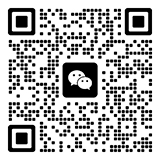

Fashion buyers are key figures in the fashion industry, connecting design, production, and sales, and playing a unique and role in the fashion trend stage.
Core work content
1. Trend insights and predictions: Buyers need to constantly pay attention to global fashion trends, including international fashion, fashion media reports, and street trends, to capture the latest popular elements, such as styles, colors, and fabrics. For example, discover the retro polka dot elements that be popular in the next season from the Paris Fashion Week, and predict its acceptance and popularity in the mass market. At the same time, analyze the influence of culture, art, events, etc., on fashion, and predict the future trend of fashion in advance to provide forward-looking basis for purchasing decisions.
2. Precise product selection and purchasing Deeply understand the preferences, needs, and purchasing habits of consumers in the target market, and select clothing styles that meet their tastes and needs for different age, gender, and groups. For example, select clothing with personality design and unique details for young and fashionable consumers; choose high-quality, well-tailored formal wear for mature business people. Est close contact with clothing suppliers, designers, and brand merchants, and participate in various clothing trade shows and ordering meetings to screen high-quality and potential clothing commodities from many products. In purchasing process, negotiate with suppliers on price, delivery time, cooperation terms, etc., to strive for the most favorable purchasing conditions and control purchasing costs.
3. Sales data: Closely track the sales data of the purchased clothing, and analyze sales trends, best-selling styles, and reasons for slow sales, etc. Through data mining, find the and problems behind the sales data, such as a certain style of clothing has a high sales volume in a specific region or season, and some styles are slow because of color or size. Based on the analysis results, adjust the purchasing strategy in time, optimize the commodity mix, increase the purchase quantity of best-selling styles, and reduce or eliminate slow- styles.
4. Inventory management optimization: Reasonably plan inventory to ensure that the inventory level can meet market demand without causing backlog. Use inventory management tools and methods to inventory turnover rate, inventory cost, and other indicators. For clothing with inventory backlog, formulate promotional, discount, and exchange strategies to clear inventory in a timely manner and reduce inventory and risks.
Required key competencies
1. Fashion acumen: A keen sense of fashion trends, the ability to quickly capture fashion trends and popular elements, and accurately judge their commercial potential. Possess a unique fashion aesthetic eye, able to select fashion-forward, attractive, and marketable clothing items.2. Data analysis skills: Proficient in data analysis tools and methods, able to perform in-depth analysis of sales data and market data, extract valuable information from data, and data support for purchasing decisions. Predict market demand and sales trends through data analysis, and arrange purchasing plans in advance.
3. Negotiation and communication skills: Excellent communication and negotiation strategies when negotiating with suppliers, able to secure favorable cooperation conditions in terms of price, delivery time, and quality. Maintain good communication and collaboration with team members (such sales, marketing, design, etc.) to ensure that the purchased clothing aligns with the brand positioning and market demand.
4. Business insights: Understand the market dynamics, landscape, and business models of the fashion industry, possess keen business insights, and be able to seize market opportunities and make wise purchasing decisions. Pay attention to industry trends and new technology, and continuously explore new purchasing channels and cooperation models.
Diverse career development paths
1. Internal promotion within the brand: Start as a junior fashion buyer, gain and then advance to a senior buyer position, responsible for more important purchasing tasks and the brand's product line. With improved abilities, one can take on management roles such as manager or merchandise director, responsible for the entire brand's merchandise purchasing and management.
2. Independent entrepreneurial development: With rich industry resources and professional experience, open a personal clothing's store or establish a fashion buyer's studio, providing customers with personalized clothing purchasing and matching services. You can also create your own clothing brand, combining your fashion philosophy and demand to create a unique product line.
3. Cross-industry expansion: After accumulating some experience as a fashion buyer, you can cross into other areas such as fashion, fashion education, and fashion event planning. For example, become a fashion editor for a fashion magazine, sharing fashion insights and purchasing experience; serve as a lecturer at a fashion institution, training the next generation of fashion buyers.

The American Certification Institute Center (ACIC) is dedicated to providing professional and amateur training, examination, certification, and consulting services
ACIC News Notice Agency Authentication Examination Team Cooperate Certificate
ACIC International Qualification Certification Center Copyright
ICP filing number:Liao ICP No. xxxxxxxx -1








